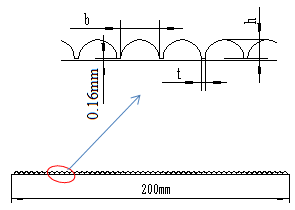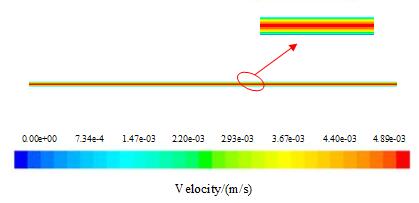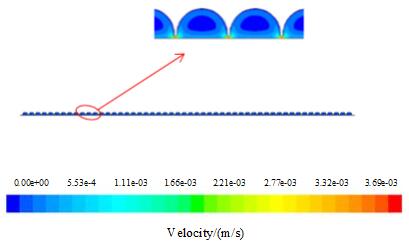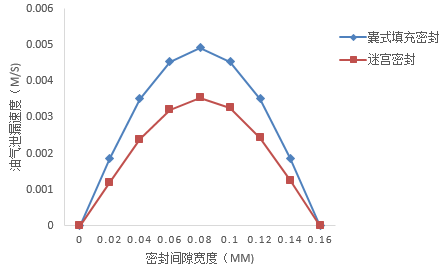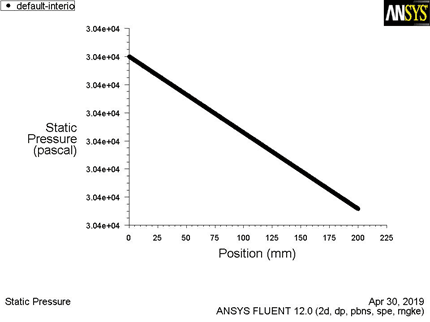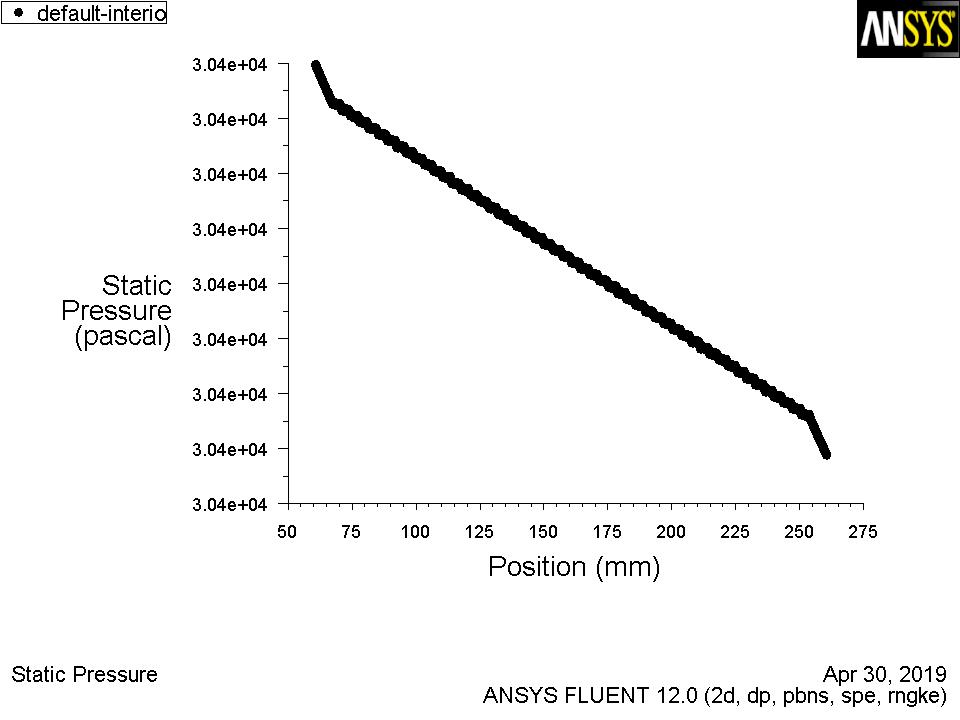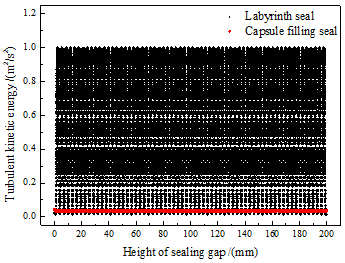5000立方米原油储罐密封结构设计及其密封性能研究毕业论文
2020-04-15 17:45:46
摘 要
内浮顶油罐因其浮盘可以漂浮在油液表面随着液面高低变化,且能与原油储罐壁之间形成的环形空间,能防止油品的挥发等优点,所以本文采用内浮顶油罐存储原油。为能更有效地减少油气从罐壁和浮盘间的间隙挥发,选择合适的密封形式并对密封性能研究及其优化设计,对减少内浮顶油罐的油气损耗量、保证原油存储环境安全和降低泄漏油气对空污染具有重要意义。
本文以直径为18m的5000内浮顶原油储罐密封结构为研究对象,采用《石油库节能设计导则》和中国石油化工(CPCC)经验公式计算内浮顶油罐密封形式为囊式填充密封时的油气损耗值,采用方程迭代的理论方法计算迷宫密封油气损耗值,得出迷宫密封油气损耗值小于囊式填充密封的结论;在理论计算的基础上,基于CFD数值模拟研究方法分别计算囊式填充密封和迷宫密封的油气损耗值,两者数值模拟的结果与理论计算的结果相近,进一步的验证采用CFD数值模拟方法计算内浮顶油罐密封结构油气损耗的方法具有可行性。基于CFD数值模拟计算方法对原有迷宫密封进行优化设计,得出以下结论:
- 只改变齿高尺寸,其他条件不变的情况下,当迷宫密封齿高为1.8mm时,迷宫密封泄漏量最小,当齿高超过1.8mm时,迷宫密封泄漏量又开始增大;
- 只改变齿宽尺寸,其他条件不变的情况下,当迷宫密封齿宽为2.9mm时,迷宫密封泄漏量最小,当齿宽超过2.9mm时,迷宫密封泄漏量又开始增大;
- 只改变齿隙尺寸, 其他条件不变的情况下,当迷宫密封齿隙为0.7mm时,迷宫密封泄漏量最小,当齿隙超过0.7mm时,迷宫密封泄漏量又开始增大;
- 通过数值模拟结果可知,在本文的研究条件下考虑,当迷宫密封齿高为1.8mm,齿宽为2.9mm,齿隙为0.7mm时,采用迷宫密封结构的内浮顶原油储罐的泄漏量是最小,则将此视为迷宫密封最优结构。
关键词:内浮顶罐;CFD数值模拟;迷宫密封;泄漏量
Abstract
Internal floating roof oil tank is used to store crude oil in this paper because its floating plate can float on the surface of oil with the change of liquid level and can form an annular space with the wall of crude oil tank, which can prevent the volatilization of oil. In order to reduce the volatilization of oil and gas from the gap between the tank wall and the floating plate more effectively, it is of great significance to select the appropriate sealing form and study the sealing performance and its optimal design to reduce the oil and gas loss of the internal floating roof tank, ensure the safety of the crude oil storage environment and reduce the air pollution caused by leaked oil and gas.
In this paper, the sealing structure of 5,000 internal floating roof crude oil storage tank with diameter of 18m is taken as the research object, the oil and gas loss value when adopting the bladder type filling seal is calculated by adopting the" Guidelines for Energy Saving Design of Oil Depots "and the empirical formula of China Petroleum and Chemical Industry (CPCC), the oil and gas loss value when adopting the labyrinth seal is calculated by adopting the theoretical method of equation iteration, and the conclusion that the oil and gas loss value of the labyrinth seal is smaller than that of the bladder type filling seal is obtained. On the basis of theoretical calculation, the oil and gas loss values of the bladder filled seal and labyrinth seal are calculated respectively based on CFD numerical simulation research method. The numerical simulation results of the two are similar to the theoretical calculation results, which further verifies the feasibility of using CFD numerical simulation method to calculate the oil and gas loss of the sealing structure of the inner floating roof oil tank. Based on CFD numerical simulation calculation method, the original labyrinth seal was optimized and the following conclusions were obtained:
- When the height of the labyrinth seal is 1.8mm, the leakage of the labyrinth seal is the smallest. When the height of the tooth exceeds 1.8mm, the leakage of the labyrinth seal begins to increase again.
- When the tooth width is 2.9 mm, the leakage of labyrinth seal is the smallest. When the tooth width is more than 2.9 mm, the leakage of labyrinth seal begins to increase again;
- Only change the size of the backlash, other conditions remain unchanged, when the labyrinth seal clearance is 7 mm, the labyrinth seal leakage is the smallest, when the backlash exceeds 7 mm, the labyrinth seal leakage begins to increase;
- The numerical simulation results show that when the labyrinth seal tooth height is 1.8mm, the tooth width is 2.9 mm and the tooth gap is 2.7 mm, the leakage of the inner floating roof crude oil storage tank with labyrinth seal structure is the minimum. The sealing structure is regarded as the optimal structure of the labyrinth seal.
Keywords: internal floating roof tank; CFD numerical simulation; labyrinth seal;leakage
目录
摘要 I
Abstract II
第一章 绪论 1
1.1课题研究工程背景 1
1.2内浮顶油罐密封结构简介 1
1.3迷宫密封结构简介 3
1.3.1迷宫密封机理 3
1.3.2迷宫密封的特点及应用 4
1.4内浮顶油罐密封结构研究现状 4
1.4.1内浮顶油罐密封泄漏损耗数值模拟研究 4
1.4.2迷宫密封结构优化研究 6
1.5 本课题主要研究内容 7
第二章 内浮顶油罐油气损耗理论计算 9
2.1 引言 9
2.2 内浮顶油罐囊式填充密封泄漏量理论计算 9
2.2.1 采用《石油库节能设计导则》计算 9
2.2.2采用中国石油化工(CPCC)经验公式法计算 10
2.2.3内浮顶油罐囊式填充密封泄漏量理论计算结果 11
2.3内浮顶油罐迷宫密封泄漏量理论计算 11
2.4 囊式填充密封与迷宫密封泄漏损耗理论计算结果对比 14
2.5 本章小结 15
第三章 内浮顶油罐油气损耗数值模拟 16
3.1 引言 16
3.2数学模型 16
3.3 几何模型 17
3.3.1几何模型建立 17
3.3.2几何模型网格划分 18
3.4边界条件设置 19
3.5 数值模拟结果 19
3.5.1 密封间隙油气泄漏速度分布 19
3.5.2密封间隙油气压力分布 22
3.5.3 密封间隙油气湍流动能分布 23
3.6 本章小结 24
第四章 迷宫密封结构优化设计 25
4.1引言 25
4.2迷宫密封齿高对油气损耗的影响 25
4.2.1不同齿高密封腔内部流场分析 25
4.2.2 不同齿高迷宫密封泄漏量数值模拟结果 26
4.3 迷宫密封齿宽对油气损耗的影响 28
4.3.1不同齿宽密封腔内部流场分析 28
4.3.2 不同齿宽迷宫密封泄漏量数值模拟结果 29
4.4迷宫密封齿隙对油气损耗的影响 31
4.4.1不同齿隙密封腔内部流场分析 31
4.4.2 不同齿隙迷宫密封泄漏量数值模拟结果 32
4.5本章小结 34
第五章 总结、发展前景及经济评价 35
5.1全文总结 35
5.2展望 35
5.3经济评价 36
5.3.1节约原油原料费 36
5.3.2设备价格估算 36
参考文献 37
致谢 40
第一章 绪论
1.1课题研究工程背景
随着我国的工业化程度不断加深,国内化工行业发展对石油的需求量会越来越大,石油成为衡量一个国家的工业制造生产能力的重要指标。大型原油储罐成为石油储存的主要设备,大型原油储罐的需求数量在我国化工等行业也越来越大,储油罐的形式也随着化工实际生产要求的提高而不断优化和改进。国内最先使用无浮顶的固定顶储罐储存原油,但是从使用的反馈情况来看,使用固定顶储罐会使储罐内部油品挥发比较严重,导致油气大量从固定顶储罐的密封结构与储罐附件的间隙挥发到外界环境中,污染环境的同时也使得发生火灾爆炸等危险事故的可能性较大。为保证原油在储存过程中损耗尽可能小,国内石油化工行业开始采用内浮顶原油储罐储存石油,内浮顶原油储罐的内浮顶漂浮在储存原油液体表面,随着罐内原油液面的变化而上下浮动,浮顶与原油储罐壁之间形成的环形空间就相当于一个覆盖膜覆盖在原油液面表面,有效的防止了油品的挥发。经过时间的检验,使用内浮顶储罐存储原油是目前公认的最理想的降低原油油品挥发的方法。正是因为使用内浮顶原油储罐存储原油的方式受到石油化工行业的一致认同,而且石油化工行业对于内浮顶原油储罐密封性能要求也越来高,所以有必要进一步对内浮顶原油储罐的密封结构设计优化,设计出最优的密封结构,解决原油在存储过程中挥发泄漏问题,从而满足石油化工行业在生产过程中的要求。
1.2内浮顶油罐密封结构简介
内浮顶原油储罐结构主要是由密封装置、密封附件、内浮盘、罐体等结构组成,要保证油罐密封性能满足工程要求,内浮盘与罐体之间密封装置结构的选择与设计显得尤为重要。
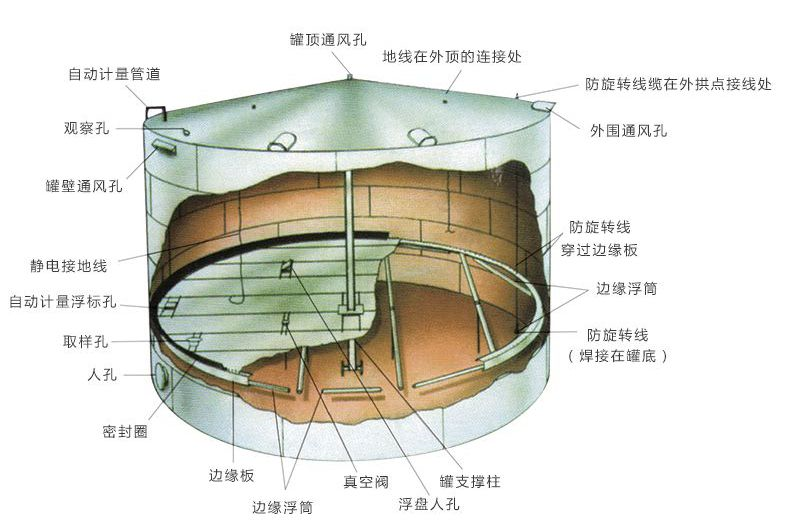
以上是毕业论文大纲或资料介绍,该课题完整毕业论文、开题报告、任务书、程序设计、图纸设计等资料请添加微信获取,微信号:bysjorg。
相关图片展示:
